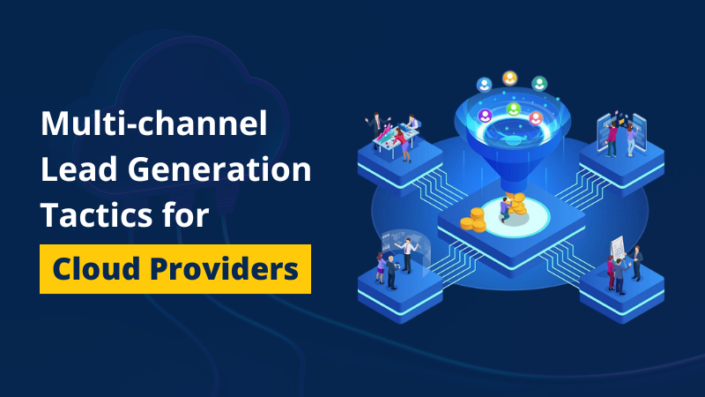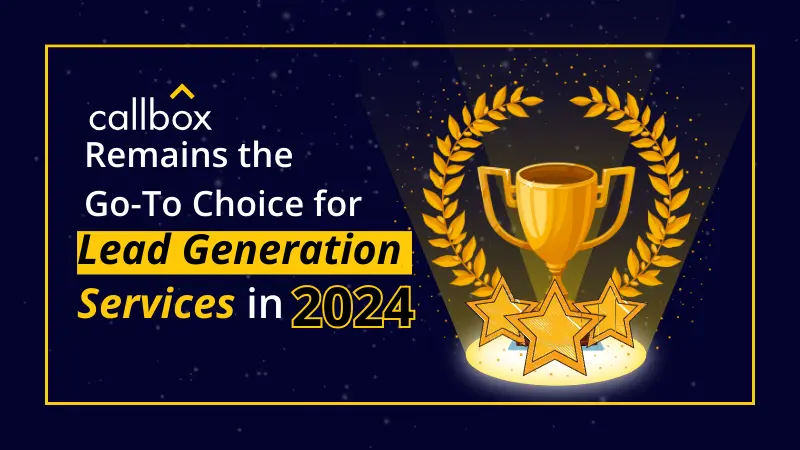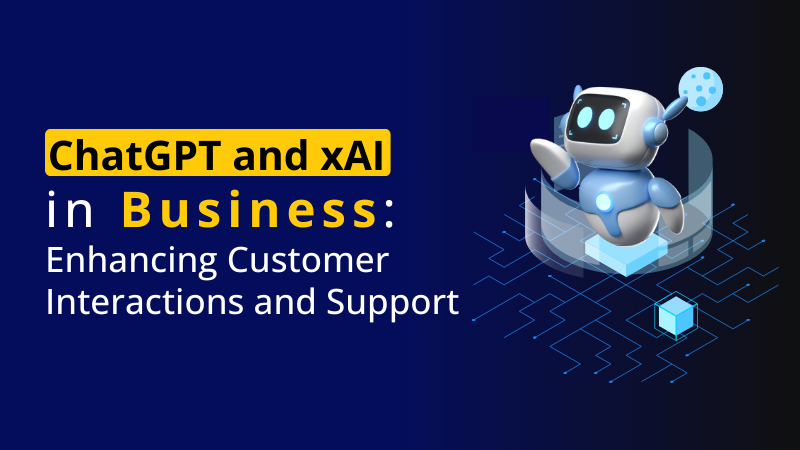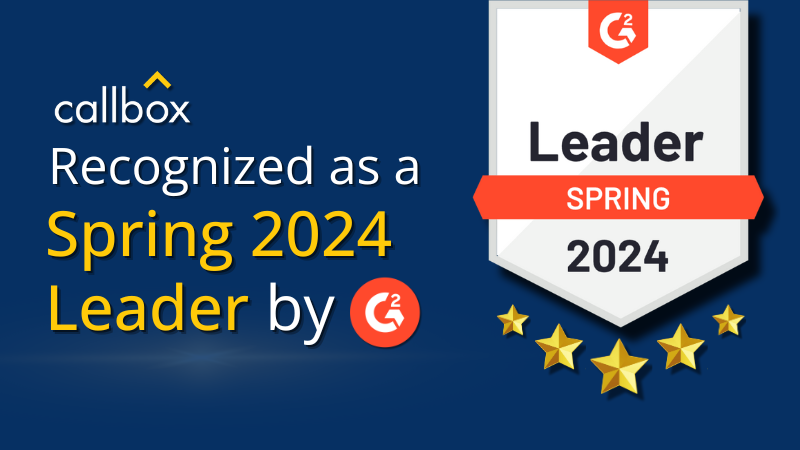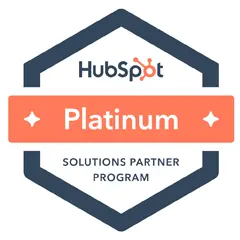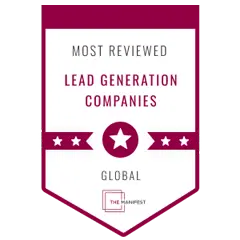For a company that specializes in cloud products and services: Do you find your cloud services struggling to gain the attention they deserve? Are you tired of chasing cloud leads that seem to lead to nowhere? If you are nodding your head in agreement, you’re in the right place!
Navigating the complex world of B2B cloud services is like wandering in a dense cloud forest without a map. So, as a cloud provider, it’s important to have a strong cloud lead generation strategy in place to reach your target audience and generate qualified leads. Additionally, your ability to generate high-quality leads can make all the difference between thriving and merely surviving and turning prospects into valuable customers.
B2B lead generation is the driving force of your cloud computing business and the traditional methods might not cut it anymore. This is where the question on every cloud provider’s mind arises: how can you turn these leads into revenues?
That’s where multichannel lead generation for cloud services comes in!
Ready to boost your cloud leads?
How Can You Generate Cloud Leads through a Multi-Channel Approach?
As always, there are many ways to do B2B lead generation, but for today we want to focus on the use of multi-channel lead generation tactics for cloud services.
While lead generation remains a constant challenge for businesses, cloud providers can tap into the power of multi-channel lead generation tactics to stand out in the crowd. As the cloud market becomes more competitive, relying on a single channel or two simply won’t cut it anymore. To truly connect with your target audience, you must meet them where they are—on the channels they frequent. This is the essence of multi-channel lead generation.
A multi-channel lead generation strategy encompasses an array of channels: email marketing, social media, content marketing, and paid advertising, to name a few. The beauty lies in diversifying your approach, ensuring your message resonates across the digital landscape. Here’s a step-by-step guide on how to effectively generate cloud leads through a multi-channel approach:
Understanding Your Target Audience
Certainly, understanding your target audience is a fundamental step in effective lead generation through a multi-channel approach. This process involves delving deep into the characteristics, preferences, and needs of the individuals or businesses that are most likely to become your cloud service clients. Here’s a more detailed explanation:
- Demographics: Start by identifying the demographic details of your target audience. This includes factors such as age, gender, location, job titles, and industry. For instance, if you provide cloud solutions for small businesses, your target demographic might be small business owners or managers in specific geographic regions.
- Psychographics: Move beyond demographics to understand the psychographics of your audience. This involves their attitudes, values, interests, and behaviors. For cloud services, consider factors like their level of tech-savviness, their attitudes toward cloud adoption, and their pain points related to cloud computing.
- Challenges and Pain Points: Dive into the challenges and pain points your target audience faces in the context of cloud computing. What problems are they trying to solve? What obstacles do they encounter when adopting cloud solutions? Understanding these pain points will help you tailor your messaging to address their specific needs.
- Goals and Objectives: Determine the goals and objectives of your potential clients. What are they trying to achieve with cloud services? Are they looking to reduce costs, improve scalability, enhance security, or streamline their operations? Align your offerings with their objectives to demonstrate the value you provide.
- Communication Preferences: Explore how your target audience prefers to receive information and communicate. Some may prefer email updates, while others may be more active on social media or attend webinars. Knowing their preferences helps you choose the right channels for engagement.
- Buying Process: Understand the typical buying process your audience follows when considering cloud services. Are there specific stages they go through, such as research, evaluation, and decision-making? Tailor your content and engagement strategies to align with these stages.
Related: The 5 Types of Buyers You Meet in Cloud Selling - Competitor Analysis: Analyze your competitors to see how they target the same audience. Identify gaps or areas where you can differentiate your cloud services. What unique value can you offer that sets you apart?
- Feedback and Surveys: Consider conducting surveys or seeking direct feedback from existing clients or potential leads. This firsthand information can provide valuable insights into their needs and preferences.
- Data Analysis: Utilize data analytics tools to gather quantitative insights about your audience. This can include website analytics, email campaign performance, and social media engagement metrics. Analyzing this data helps refine your approach over time.
Once you’ve gathered this information, you can create detailed buyer personas that represent your ideal customers. These personas serve as fictional characters embodying the traits, needs, and behaviors of your target audience. With well-defined personas in place, you can tailor your multi-channel lead generation efforts, messaging, and content to speak directly to the people or businesses most likely to benefit from your cloud services. This targeted approach increases the effectiveness of your lead generation efforts and enhances the chances of converting leads into loyal clients.
Setting clear objectives
First things first. You cannot just dive right in headfirst without clarifying your objectives. Every company is different when it comes to this. There are two ways of measuring the success of your lead gen activity.
- One is the sales-qualified leads (SQLs) which determines the number of probable clients that are ready for sales conversation.
- Another is by the number and the total amount of deals closed, which is the simpler way to measure the success of your lead gen efforts.
Stay somewhere in between to keep a balance as maintaining a balance between these two metrics is key to a successful marketing strategy. It’s not enough to generate leads; they must ultimately translate into revenue.
Find our how we can help you increase cloud leads.
Email marketing
If you’re searching for a highly effective approach to boost your cloud lead generation and conversion rates, consider exploring the benefits of email marketing.
Ever since email marketing has been a tried-and-true method of lead generation and it is one of the few online marketing channels that have stood the test of time.
Implementing an email marketing campaign proves to be a potent method for cultivating and nurturing leads for your cloud computing business. Additionally, it boasts the potential to deliver a remarkable return on investment (ROI). If truth be told, for every $1 invested in an email marketing campaign, you can anticipate an impressive return of $44.
To initiate lead generation via email marketing, you can incorporate an email sign-up bar or a pop-up on your website. These features serve as compelling incentives for more individuals to subscribe to your email list.
Lastly, by creating and sending informative and engaging emails, you can build relationships with potential customers and nurture them along the buyer’s journey
Ready to boost your leads with email marketing?
Social media
Of course, Social media is not just for liking funny cat videos or tweeting about what you ate today. Many businesses are taking advantage of this channel. So, if your goal is to increase lead generation through social media platforms, adopting a social media marketing strategy can be a valuable approach. Social media platforms offer a unique opportunity to create and distribute posts and advertisements, facilitating communication with both potential prospects and your existing customer base.
By using this channel, just make sure that you follow the general rule of thumb: build a loyal following, social media is a dialogue and not just a one-way street, and influence connections for content sharing.
Learn How to Write Engaging Social Media Content through AI Tools
As cloud service providers, take full advantage of this. Make sure you choose the right channels that will be deemed the most effective for your clients and incorporate special cloud services that they can only find with you and nowhere else.
At the end of the day, it all boils down to having a perfectly healthy balance between your inbound and outbound. Keeping up this marketing strategy will do the trick in getting your message across as well as garner more leads that way.
Here are a few effective methods for enhancing lead generation through social media marketing:
- Launch targeted and personalized advertising campaigns tailored to resonate with your specific target audience.
- Foster engagement by promptly responding to messages and comments from your audience.
- Share informative content related to the latest developments in cloud computing software.
Social media serves as an exceptional avenue for broadening your online presence and establishing meaningful connections with individuals within your target demographic. Throughout this process, you’ll furnish users with valuable insights into your cloud computing company, ultimately resulting in a higher number of leads and conversions in the long term.
Search engine optimization
SEO is like a tool for making your website show up and rank higher on Google and other search engines. When your website shows up higher on the search results page (SERP), more people can find it.
Imagine, 95 out of every 100 people who search online only look at the first page of results. So, using SEO is important to help more people discover your cloud computing company online, which can bring in more potential customers.
To use SEO effectively to get more customers, you should:
- Use words on your website that are related to cloud computing (keywords).
- Make your website load quickly so people don’t get impatient waiting.
- Make sure people nearby can easily find your business by using local keywords.
- Ensure your website looks good and works well on phones and tablets (mobile-friendly).
- Make your website easy to use and provide useful information.
When you do these things, your website will show up higher in SERP, which means more people will visit your website and become potential customers for your cloud computing company.
In addition to using a multi-channel approach, it’s also important to track your results and optimize your campaigns accordingly. By tracking your results, you can see which channels are most effective at generating leads and make adjustments to your campaigns as needed.
By following these tactics, you can create a multi-channel lead generation strategy that will help you generate qualified leads for your cloud business.
Let us help you improve your On-Page SEO
Tips for Generating Leads for Cloud Providers in 2023
Here are some tips for generating leads for cloud providers in 2023:
- Focus on generating inbound leads. Inbound leads are generated when potential customers come to you, rather than you having to go to them. This can be done through content marketing, social media, and other channels.
Discover the Benefits of inbound Marketing - Use lead generation software. There are a number of lead generation software solutions available that can help you automate your lead generation process and track your results.
- Partner with other businesses. Partnering with other businesses can help you reach a wider audience and generate more leads. For example, you could partner with a marketing agency to help you with your lead generation campaigns.
- Attend industry events. Attending industry events is a great way to meet potential customers and generate leads.
- Get involved in online communities. Getting involved in online communities is a great way to connect with potential customers and build relationships.
Balancing Inbound and Outbound Leads
Effectiveness in lead generation for cloud companies relies on maintaining a healthy balance between your inbound and outbound strategies.
Inbound leads
Perform keyword research and optimize your website for all the on-page factors like title, meta tags, keywords, image tags, etc., and off-page link building. Other tools include Keyword Planner, Google Trends and Insight, and Alexa.
Don’t forget your content marketing which includes blog post writing on your website and other social media platforms. Some tools to be used for this are BuzzSumo, PitchBox, Buffer, and DrumUp.
Outbound leads
There are many software solutions that are available today to help you find leads from LinkedIn and many more.
The catch is that manually generating tech leads can be quite time-consuming and hectic. This is why most companies opt to use better and faster alternatives like outsourcing the services of a B2B lead generation company. But hey, if you have the extra time, money, and patience to generate leads in-house, then knock yourselves out.
Related: Inbound and Outbound Strategies are Match Made in Marketing Heaven
Ready to acquire more cloud leads?
Cloud Computing Trends in 2023
The cloud computing industry is evolving each year. Here are some noteworthy trends for 2023
Increased investment in cloud security and resilience
Migrating to the cloud offers many benefits, but it also exposes businesses to new cybersecurity risks. In addition, businesses need to comply with regulations around data privacy and security.
As a result, businesses will need to invest more in cloud security and resilience in 2023. This includes using AI and predictive technology to spot threats, as well as managed security-as-a-service providers.
Multi-cloud is an increasingly popular strategy
If 2022 was the year for hybrid cloud, 2023 could be the year the businesses will increasingly adopt a multi-cloud strategy. This means using multiple cloud providers to improve flexibility and security.
A multi-cloud strategy can help businesses avoid becoming too reliant on one provider, which can be risky if that provider experiences an outage or discontinues a service. It can also help businesses take advantage of the best features and pricing from different providers.
The AI and ML-powered cloud
Artificial intelligence (AI) and machine learning ( ML) are increasingly being used in the cloud to improve efficiency and performance. For example, AI can be used to optimize resource allocation, detect anomalies, and prevent fraud.
This 2023, we can expect to see even more innovation in this area, as cloud providers continue to develop new ways to use AI and ML.
Low-code and no-code cloud services
Low-code and no-code cloud services make it easier for businesses to develop and deploy applications without having to write code. This can save businesses time and money, and it can also open up new opportunities for innovation.
This 2023, we can expect to see even more growth in the low-code and no-code cloud services market.
Innovation and consolidation in cloud gaming
Cloud gaming is still in its early stages, but it has the potential to revolutionize the gaming industry. This 2023, we can expect to see continued innovation in this area, as well as some consolidation among the major players.
Regardless of the methods you use to find potential customers, it’s crucial to have a friendly and appealing image. This means using useful and high-quality content that helps your business. When you create valuable and interesting content, it grabs people’s attention without being annoying or noisy. Also, incorporating these trends into your multi-channel lead generation strategy can give your cloud services company a competitive edge in 2023.
Conclusion
Multi-channel lead generation is not just a strategy but a necessity. By setting clear objectives, embracing email marketing, social media, and SEO, and finding the right balance between inbound and outbound leads, cloud providers can thrive in an increasingly competitive market. Moreover, staying updated with the latest trends, such as multi-cloud strategies and AI and ML-powered cloud, ensures your company remains at the forefront of innovation.
Are you ready to take your cloud lead generation strategy to the next level in 2023? It’s time to leverage the power of multi-channel tactics and adapt to the ever-changing landscape of cloud services.

